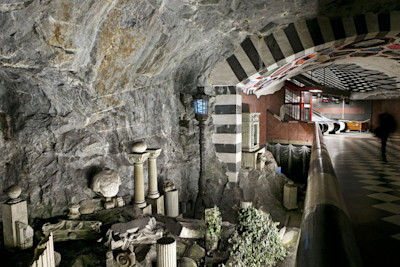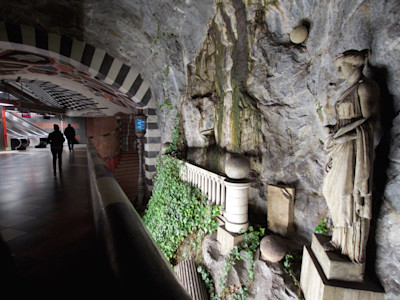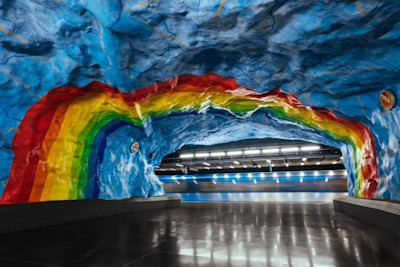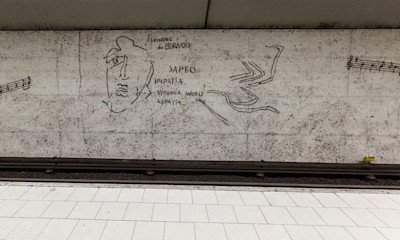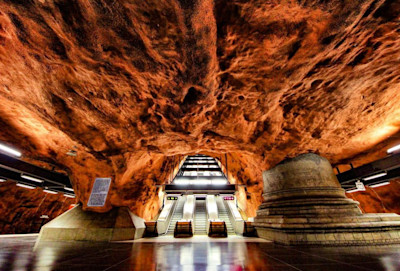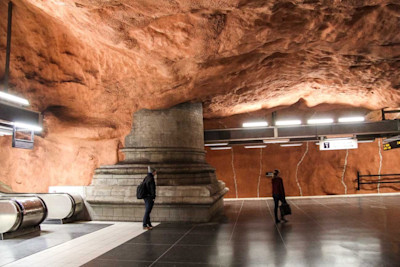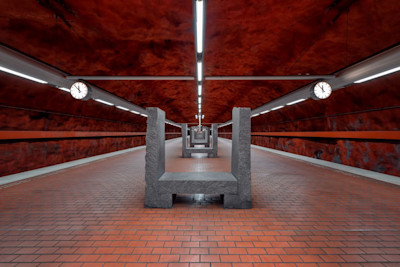Underground Stockholm
A strange and beautiful surprise in the deepest parts of Stockholm.
08.23.2018

As the unofficial capitol of Scandinavia, Stockholm serves as its seat of culture, art and design. It’s a strange and beautiful surprise, then, to find that the deepest parts of the city reveal not the expected Nordic minimalism, but a desire to be bold, unapologetic, and expressive.
As it stands today, the metro system in Stockholm serves as the longest art gallery in the world; ninety out of the one hundred metro stops house artworks. Born out of the Swedish desire to bring art and thoughtful design to every member of the public, the Social Democratic Party of mid-century Sweden began to commission art that would come to envelope the spaces used most consistently by the widest audience. These works not only sought to immerse each traveler in art but became ways for the oft-reserved Swedes to question their political climates, their pressure for conformity, and their relationship to a collective and austere idea of beauty. Of course, the underground location is a metaphor not lost on its visitors: people will always have a deep-seated desire for artistic expression.
From brutalist and post-modern to ornate and otherworldly, the metro stations serve as reflections upon, disruptors to, and neutralizers of the neighborhoods they’ve served throughout the decades of their existence. For example, the ceiling of the central station, known as “T-Centralen” was draped with painted blue foliage as an attempt by the artist Per Olof Ultvedt to calm the busy space in the 70’s. “Kunsgtradgarden” station, designed by artist Ulrik Samuelson, was an ode to a 17th century palace that once stood on its ground, and Enno Hallek’s design of “Stadion” station emerged in its cloud and rainbow glory as a celebration of the inclusive message that the Olympics brought to Stockholm in 1912. The stations changed with the decades as well, take the example of the “Ostermalmstorg” stop which was once a cold war era bunker and become adorned by the drawings of feminist artist Siri Derkert. While some of the stops seem to be purely aesthetically interesting (Universitetet’s bold colours, for instance), they all leave us thinking about the ways in which our public spaces reflect the many (and not always obvious) aspects of our social identity.


